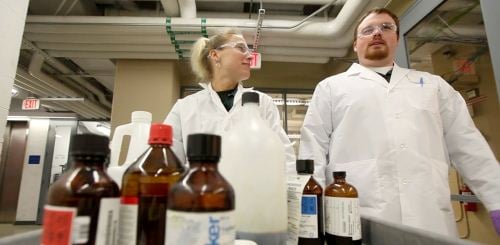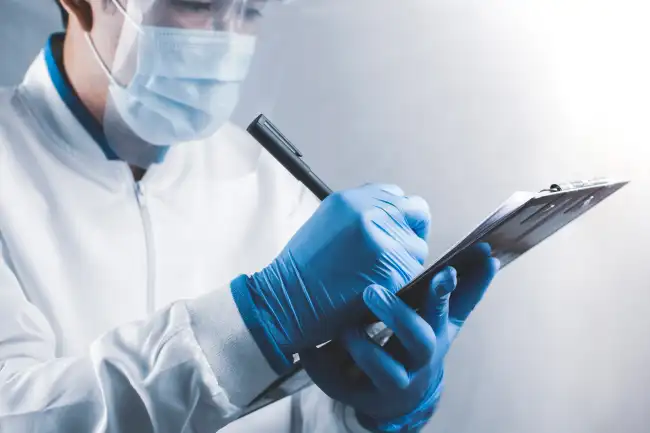7 Things You Need to Know Before Moving Your Lab
 There are a lot moving parts when it comes to completing a lab relocation. You have to pack and label chemicals, decontaminate your lab thoroughly, and transport everything to the new lab, all while remembering every regulation associated with the move and making sure you’re in compliance with all of them.
There are a lot moving parts when it comes to completing a lab relocation. You have to pack and label chemicals, decontaminate your lab thoroughly, and transport everything to the new lab, all while remembering every regulation associated with the move and making sure you’re in compliance with all of them.
Performing a lab relocation from start to finish safely and efficiently takes a wide range of unique skills. Lacking in any area could result in hundreds of thousands of dollars in fines as well as employee injuries and property damage. Here are seven things you (or people you’re working with) need to know before performing a lab relocation.
Regulatory Compliance
This is the most important thing you should understand before performing a lab relocation. Unlike other projects, a lab relocation requires a deep knowledge of not only facility regulations but also transportation regulations. This means everything should comply with EPA, OSHA, DOT, IATA, and any local, facility, or other regulatory bodies that might be involved. Some tips for helping to keep it all in order? Contact your local regulatory bodies to ask what’s expected of you in the move. Also, hiring a specialist to consult on the logistics of the project could prove to be helpful in keeping the project compliant.
Financial Management
While planning for regulatory compliance you should also be planning for financial success. Between the hours invested in planning and delegating, hiring experts competent enough to complete the project, and making sure the appropriate equipment and precautions are being used, lab relocations can be costly depending on the size and distance of the move, as well as how many companies you choose for outsourcing work.
One way to cut costs without decreasing the quality of the relocation is hiring one contractor to go through the entire process with you (rather than hiring a different contractor for each step). This will improve the efficiency of the project and decrease the overall price.
After developing your budget, you can build a project plan including the scope of the work and the timeline for completion. It’s recommended you start to do this at least a year in advance if possible.
Hiring and Team Management
Before beginning the lab relocation, a competent and qualified team should be brought on with members that are experts in all aspects of a lab relocation. Be sure to select team members that represent key internal and external stakeholders.
Internal stakeholders often include department leaders, EHS, facilities, and IT. External stakeholders will include project managers, relocation experts, environmental consultants, and supply chain vendors. Identify stakeholders that will give you the greatest chance for success. When hiring for a lab relocation, assess the competencies and qualifications for each individual hired. If you’re not hiring a contractor for the entire project, you should also be adept at keeping the various teams organized and delegating tasks.
Waste Disposal
Properly disposing of chemical wastes is one of the first steps to relocating a lab. All chemicals should be assessed and disposed of, if they’re not going to be used in the new facility. Chemical transport and disposal are approximately the same in cost. It’s smarter to dispose of unnecessary hazmat to reduce transportation liability risks. Have team members on site that have a deep understanding of hazardous waste disposal.
Hazmat Transportation
It’s inevitable that hazmat will be transported during a lab relocation. You should have a team member that knows how to properly pack, label, placard, and transport hazmat all within PHMSA regulations.
Lab Decontamination
After you have moved your lab, there is still work to be done in the facility. Given the nature of hazmat supported research and development, facilities and companies incur environmental liabilities following facility moves. It is standard practice to decontaminate your previous facility of any potential and existing hazard contamination as a result of research and development activities. ANSI provides guidance on research laboratory decommissioning methodology that should be adhered to ensure companies minimize their liabilities at previous facilities. Have team members with experience in lab decontamination.
Sampling and Reporting
On the heels of the decontamination it is recommended that the laboratory decontamination be quantified and documented through sampling and reporting. This should be accomplished through real time sampling as well as laboratory analysis. The decontamination methodology, activities, and sampling results should be summarized in a report that your company can use to demonstrate and quantify your decontamination efforts. Having a team member who is experienced in performing these tasks will reduce the environmental liabilities and risks once you have moved into your new facility.
For more information on lab moves download our Quicknotes on Lab Relocation Regulations or watch our video on the our four-step lab relocation process!







